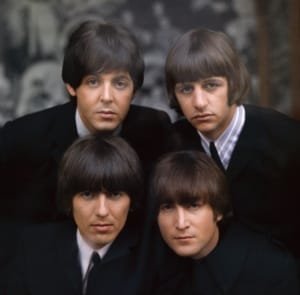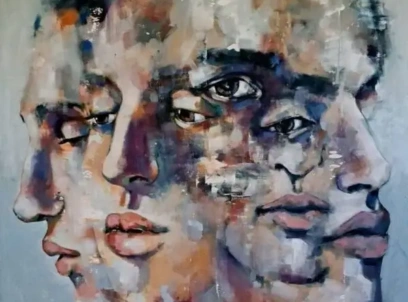By Rani Jadfa and Joe Lombardo
How does music end up in movies, or TV shows, or video games? From an intense battle scene underscored with epic, orchestral music, to that moment when the couple finally kiss with the swell of a string section, to the satisfaction of the ending credits passing by over a catchy vocal tune, music in media is crucial to overall impact on the audience, and so it is vital that the production team secure the right songs for their project. This is achieved through sync licensing.
Sync licensing is an agreement between a production team (who could be working on a film, video game, advertisement, etc.) and a composer that gives the production team permission to use a piece of the composer’s work in their project. Sync licensing is a huge and often overlooked part of the music industry. Therefore, in this article, we will be breaking down how the licensing process works, as well as the benefits and potential drawbacks of working in the sync licensing industry.
So, how are sync licenses actually obtained in media production? Usually, this job will be handled by the production team (often including a music supervisor) or the project’s composer.
Sometimes, the director will have a specific song in mind that they want to use so the production team must obtain a sync license for that particular song. For example, the 2014 film Guardians of the Galaxy features a soundtrack stacked with classic rock hits from the 60s and 70s, to represent the main character’s fondness for Earth and media from that specific time period. In these cases, the production team will try to obtain usage permission straight from the copyright owner of the song, which is usually the publisher. Song publishers can be found through PRO (Performance Rights Organisations) websites such as ASCAP, SESAC, and BMI.

When contacting a copyright owner, producers generally include a synopsis of their project as well as its budget. This helps the copyright owner gauge whether or not the project is something they want to be associated with, and also gives them an idea of what they can/ should be charging for the sync license. It’s also important that the production team explain how they want to use the song, as this can affect negotiations. If they want to use the song over the opening or ending credits, this will likely cost more than if they just want to use the song in the background of a speaking scene, for example. Finally, it’s also important that the producers explain whether the film is set for theatrical release, or purely festival/ educational screening; if it’s the latter, the publisher might consider quoting a significantly lower price. From here, the producer and publisher will negotiate a fair price for the sync license given all of the variables.
Directors might not always be looking to use a specific song though they might have a particular scene or event in mind, and just be looking for a song with an appropriate vibe. In these cases, the production team can go to websites such as PRS for Music, Music Gateway, United Masters, and Syncr which provide a library of licensable music for them to choose from. Acting as a middle-man, this also allows producers to skip having to find and contact a publisher themselves. These websites are arguably most useful for composers though, as they give musicians an easy way to make their work readily available for media usage and licensing, which could generate them some money and even jump-start their careers. Before we get into the pros and cons though, let’s first talk about the ‘how’.
Most websites dedicated to sync licensing (as listed above) allow musicians to sign up with them via a payment plan. Usually, the plans will allow you to upload your music for licensing, and promise you a certain percentage of all royalties earned as your music is used. Syncr is an example of one that will also give you direct access to briefs submitted by producers. This way, you can tailor your music to what the brief, or call for commissions, is asking for, rather than hoping a production team comes across your music and it happens to fit what they are looking for.
However, not all sync services will give you access to briefs so it’s important to know what you can do to make your music stand out to producers and maximise the chance your work is licensed. The most commonly used music genres in media include pop, folk, classical/ orchestral, hip-hop, and R&B/funk. That’s not to say other genres don’t get used frequently as well, but history shows that focusing on a few of these specific genres will likely net you the most interest. It is also a good idea to make music that is accessible, and not overly complex in sound. Soundtracks are very rarely the centre-piece of a production, so try to keep your music ambient and mood-focused rather than flashy and in-your-face.
Work in the media industry can often revolve around connections, so try and reach out to people who could help you get your music licensed and used in projects that you might be interested in. You can check the credits of a film, TV show, or video game to see who the music supervisor was. Try finding and adding them on LinkedIn, or look for an email address you can contact them on – let them know how much you appreciate their work. This can provide you with an in for any of their later projects. Share some of your music with them or let them know that you’d love the chance to contribute to anything they end up working on in the future. It never hurts to ask directly, and building a network of relevant contacts will only broaden your opportunities.
Benefits:
Now that you have a general understanding of sync licensing, it’s important to take a look at some of the benefits and drawbacks that will help you make the best choices for you and your music.
The main benefit is exposure. If you agree to have your work sync licensed for a project, your music has the potential to branch across the whole world. For example, if a fourth Guardians of the Galaxy was suddenly on the cards, then a soundtrack would need to be created to fit the attributes of the film. Marvel movies are released around the world and usually do incredibly well so they would instantly have a wide reach. That film’s soundtrack is then listened to by countless individuals who enjoyed the movie and want to experience it again, second-hand. They take to Spotify, discover the playlist, and suddenly someone from the other side of the world knows your name and the lyrics to a song you wrote.
Another advantage comes from the money side. For instance, when licensing for video games, along with the upfront fee, many artists make money through streams and merchandise. However, the outreach and success of the song’s placement dictate the outcome of future revenue and the artist’s popularity. Nevertheless, the types of media that use sync licensing have a certain longevity: certain films are solidified in cinematic history, we all have comfort TV shows, and we might re-play our favourite video games over and over. If successful, sync licensing can have long-term effects on an artist’s career.
Drawbacks:
Nevertheless, there are always going to be certain drawbacks to these aspects of the music industry. Some artists may feel that they are ‘selling out’ because their music is potentially not being used as they originally envisioned. Furthermore, there are times when a certain song may be used in a controversial piece of media. That piece of music – along with the artist – is then unintentionally attached to said piece of media. Often with sync licensing, the artist has a lack of control once the music has been licensed and left their hands.

For example, The Beatles’ White Album track ‘Revolution’ was licensed for a Nike ad in 1987. Paul McCartney particularly later expressed his indignation with how the song was used – he felt that its association with an advertisement targeted at consumers went against the song’s original anti-establishment message.
These sorts of creative differences can cause difficulties as you have to balance your artistic integrity and the prospect of your music reaching out to a wider audience. At the end of the day, it is always the artist’s decision to sync license their work but the consequences are out of their control as it is the audience’s choice how they receive the media.
To finish with a success story, I present the Stranger Things effect. Season after season, the Netflix hit has reintroduced younger audiences to songs from the 60s and 70s. Most notably, who can forget when Kate Bush took over the summer of 2022. ‘Running Up That Hill’ reached No.1 on the charts and the data speaks for itself: ‘While we’ve seen a notable increase in catalogue music streams in recent years with an annual 20% growth alone in 2021, the Kate Bush story has taken the phenomenon to a new level’. This goes to show the power of sync licensing as Kate Bush now has the longest gap between two No.1s in history. The song was used in the TV show for less than five minutes… sometimes that’s all it takes.

